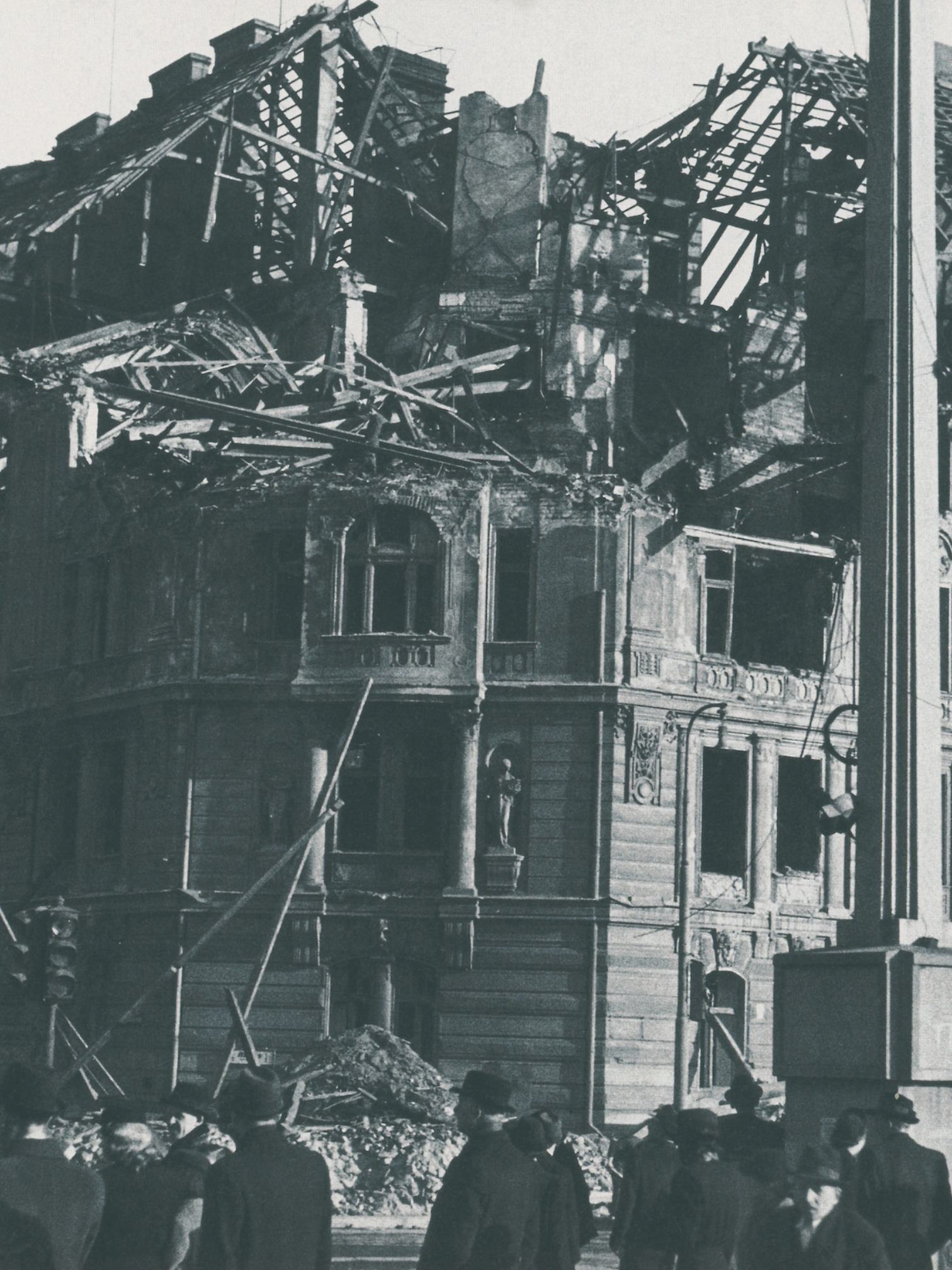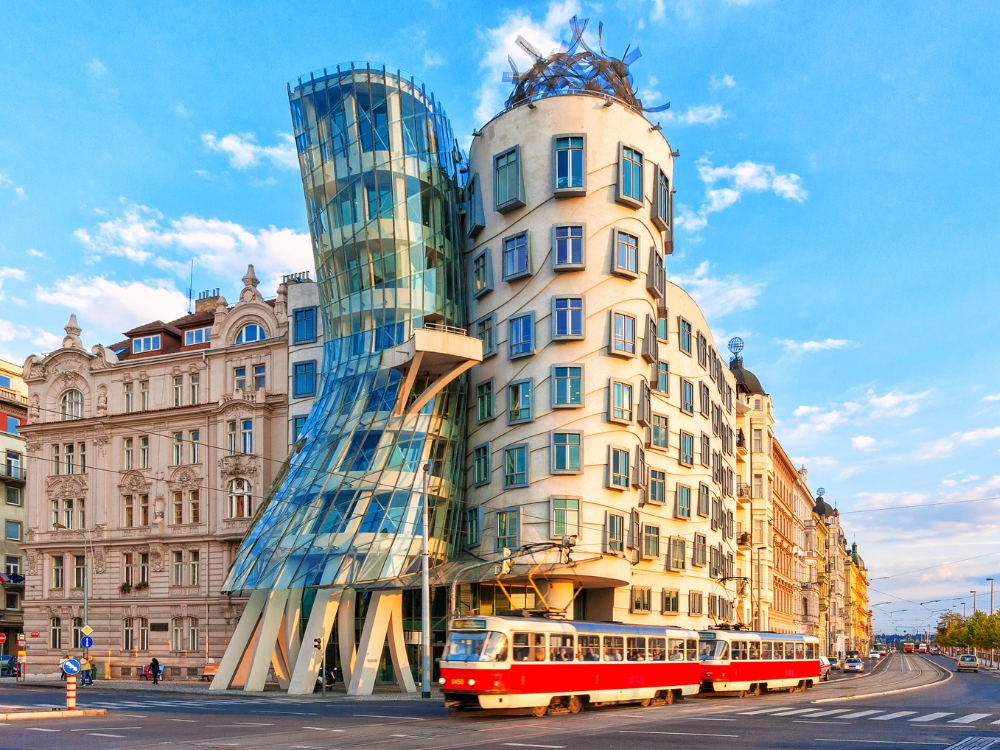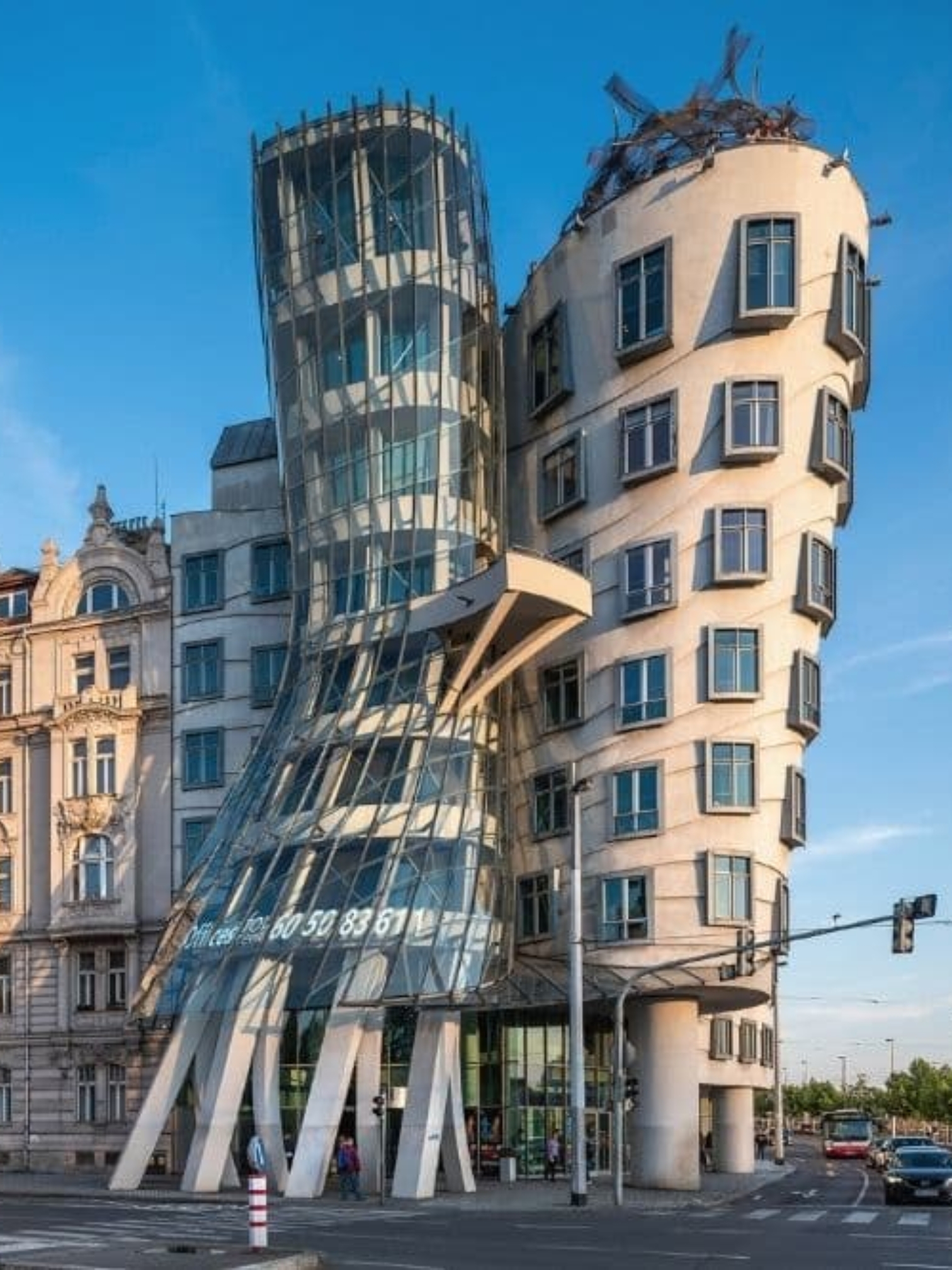Dancing House
A corner jewel in Deconstructivism style
The Dancing House in Prague is the best known building of modern Czech architecture. Despite Prague being famous for its beautiful historical center that is full of stunning monuments and little snaky streets, the modern Dancing House is a popular target for tourists and photographers thanks to its non-traditional architectural design. Being placed on the coast of the longest Czech river Vltava, Dancing House represents the movement of deconstructivism in the post-communist era in the Czech Republic.
The history of Dancing House started during the second world war. There used to be a standard building with flats for people at the place where Dancing House is standing today, but the building was accidentally destroyed by American bombs during the war.
.jpg)
.jpg)

The place had been left empty for decades while the communist party was in power in Czechoslovakia, although it was decided that there was going to be a new building. Nothing however happened until 1990’s when the last Czechoslovakian and the first Czech president Vaclav Havel, living next to the Dancing House, put things into movement together with his neighbor Vlado Milunic.
The House was designed in 1992 and construction was finished in 1996. Thus, seven years after the fall of communism in Czechoslovakia and four years after Czechoslovakia split into two countries todays Dancing House was born.
There were many plans and ideas on how to build the new building. Right from the beginning, the plans were brave, original and different from anything built in Prague before.
The architect of the building is a Czech with Croatian origins, Vlado Milunic and Frank Gehry. Milunic wanted a specific deconstructed shape, resembling leaning or moving of the building to metaphorically illustrate the movement of the Czech nation from its communist past. Nowadays, Dancing House is a symbol of the arrival of democracy and freedom in the 90s.

Deconstructivism is a movement of postmodern architecture, and it draws on the fragmentation of building. Buildings featuring deconstructivism lack symmetry, harmony or continuity and their surface is usually deformed, as seen at Dancing House.
The whole project of Dancing House was followed by controversy. Many people claimed that non-traditionally designed building would unfit to the rest of the city that consists mainly of Art Nouveau, Gothic and Baroque monuments and buildings. The controversy was also a reason why the project was changed many times and ended up less ambitious than the first designs aimed for. Later, Milunic stated that he was sorry the initial draft was not fulfilled. Based on the original ideas, the tower would have been taller and more beautiful. The current design of the tower was made as ‘a solution to deal with a difficult situation’, according to Milunic.

.jpg)
.jpg)
The House functions as a hotel, café and gallery, where various exhibitions take place and a restaurant that can be visited by tourists. The most exciting place inside the building is its sightseeing terrace on the top floor that offers a beautiful panorama of Prague. The terrace with its stunning view is accessible via the Glass Bar. Dancing House is in the center of Prague; therefore, transport is straightforward and accessible.
In the immediate vicinity of the Dancing House you can also find our MN6 Luxury Suites.
Article author:
Kristian Smith








